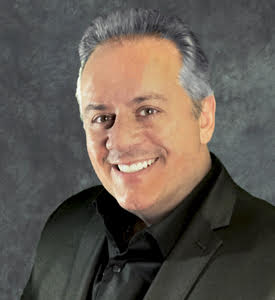Sponsored Editorial
Scrofani is a well-known supply-chain asset protection professional with over twenty-five years’ experience in retail and manufacturing. He is a prolific writer and frequent speaker at regional and national conferences. Scrofani is a consultant and general partner with MPS Ventures. He was recently named vice president of supply-chain security and intelligence for ALTO US. Scrofani can be reached at maurizio [at] mpsconsultants.com.
As financial budgets continue to be strained, it becomes most important for loss prevention and asset protection professionals to do more with what they have or in some cases continue to do what they do with far less. This requires more than a sharp pencil and a level of interdepartmental collaboration. It requires creating, doing, and thinking of solutions that have not been thought of or at times not been tested.
We sat down with Maurizio Scrofani, CCSP, LPC—someone who has demonstrated creative leadership—to ask him how he managed to find success as an entrepreneur inside the retail enterprise.
When did you first decide to step out of your sandbox?
I was in my first management position and realized that there were questions I wanted answered that I could not find in my own area of control. I decided to learn about areas that other departments would complain about or find fault with. It became sort of a journey looking for the Holy Grail.
You must have come across quite a bit of scrutiny. How did you work through it?
At first there were those who wanted to be part of this renaissance, folks who were all about “feed tuna mayonnaise.” You could feel the energy building up and the wind in your sails. That atmosphere is contagious, and you began to see other departments taking risks and looking in their own files for great ideas they had mothballed that were still quite relevant.
Once you got past the discussions and had to design, fund, and implement, the oligarchs would jump in and ask all the right questions: What are the intended consequences? What are the long-term financial strains? Is this scalable and sustainable?
Those were the great questions most cloud walkers enjoy answering. However, to your question, there were those who felt it would impact their fiefdoms. Those were the traditional folks who came across as obstructionists. People in that very small group are usually in positions of power or high-level influence. It took a great deal of political prowess, building bridges, gaining allies, and learning almost a different language. If you don’t have patience, you will implode and be dismantled. It sometimes felt like an episode of Survivor or Game of Thrones.
The good news is that there are far more long-term, true, senior leaders who get it than those who don’t. Once you get to the finished product with the anticipated results, you tend to win everyone over.
Do you believe LP is well represented in the C-suite circle?
Yes and no. I do believe there are a few that have access to the corner office based on merit, accomplishment, or a great deal of politicking. But for the most part, there is still a great deal of stigma that AP or LP is still a cops-and-robbers group that generates expense, not profit.
You have to ask yourself, why does legal report to human resources versus the other way around? Why do companies see HR having a CHRO and not seeing the holistic value of a CAPO or CSO? Asset protection usually reports up to operations or finance, and the pyramid head is COO or CFO. The level of detail and demand to not just go deep and wide is an expectation in AP.
The challenges the AP group continues to face with budgets, regulations, legal, supply chain, and visibility is dwarfed by how quickly AP executives need to shore up their cyber and technical skills to stay relevant.
Which industry do you think will promote more intrepreneurship-style behavior?
All of them. Retail department stores will continue to evolve and acknowledge that customers are looking for experiences and not just products. A customer can order online and can return it in many different ways without necessarily leaving their homes.
Manufacturers are also becoming most innovative in not just selling but also buying. They have layered software programs that allow them to make the best secure, fast, and cost-effective decision in a cross-continent environment.
Grocery continues to look for innovative ways to manage spoilage and hot shot loads. They are a tight-margin industry that is always looking for a better mousetrap.
Pharma is so highly regulated that they run the most detailed and layered programs in the consumer spending space. They may have some additional capital, but their expense continues to be strained by regulations requirements.
I have met experts from all areas, different continents, and can say that we are in a positive multi-industry renaissance.
What do you think these intrepreneurs will bring to the market in the next three to five years?
I believe the customer will create the shift in paradigm as they always do. Just look at omni-channel today versus ten years ago when the phrase did not even exist. The customer pulls the industry, and the industry morphs to what the client demands.
I continue to see software and hardware integrating to allow for data to assist in making better decisions. I continue to see LP experts moving into hardcore data collection, analysis, and creating control tests as a true scientific control experiment is managed.
I am excited and started buying popcorn as the next several years will be a movie that is going to be great and well worth the price of admission.


